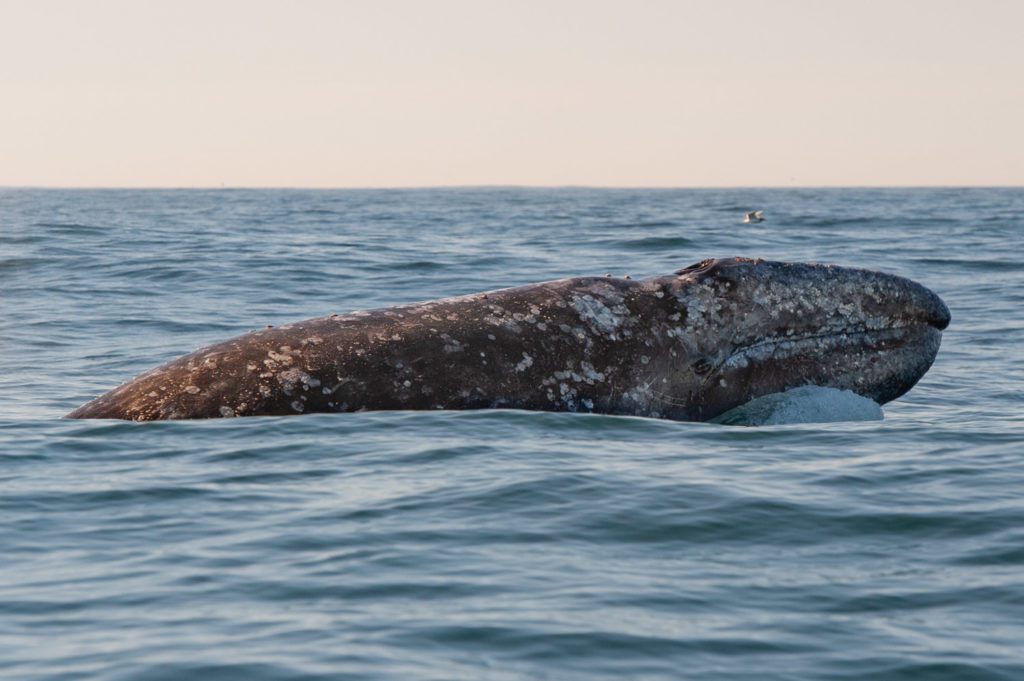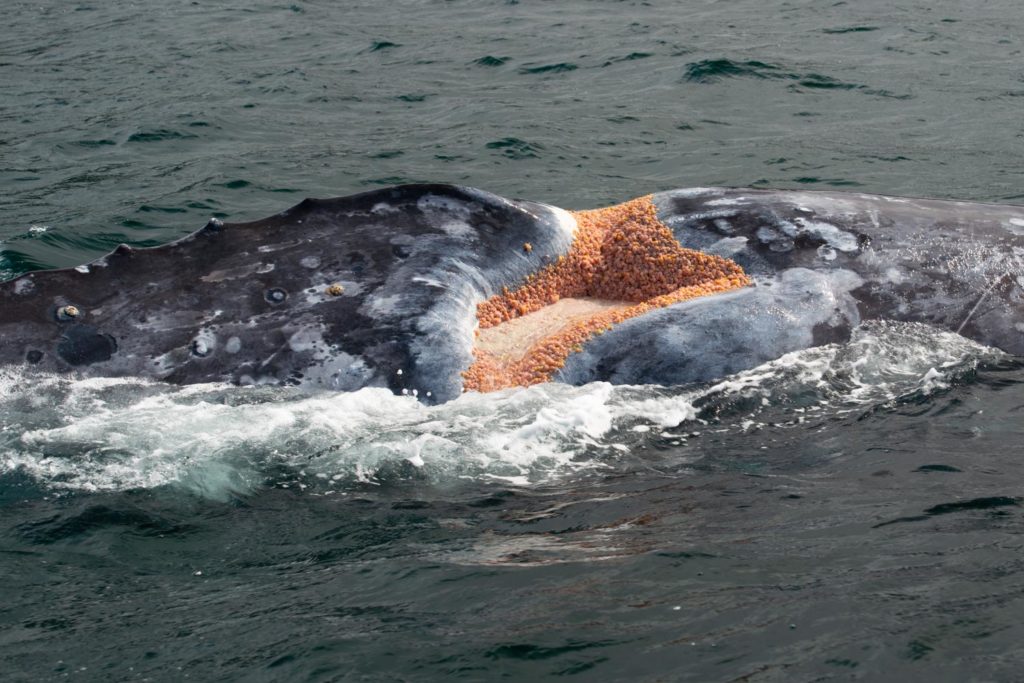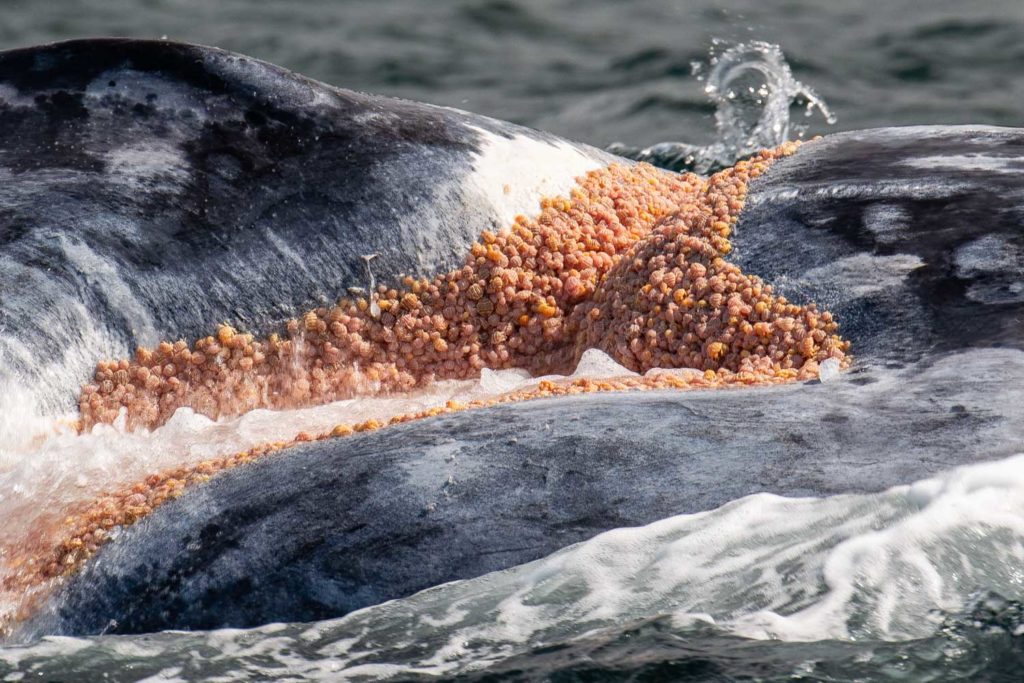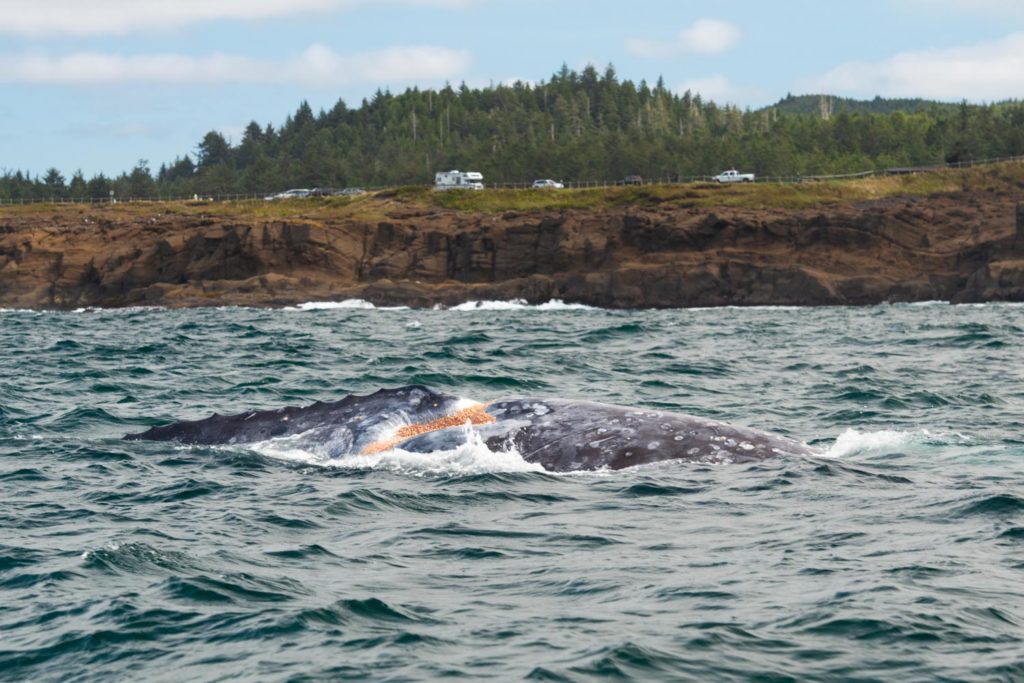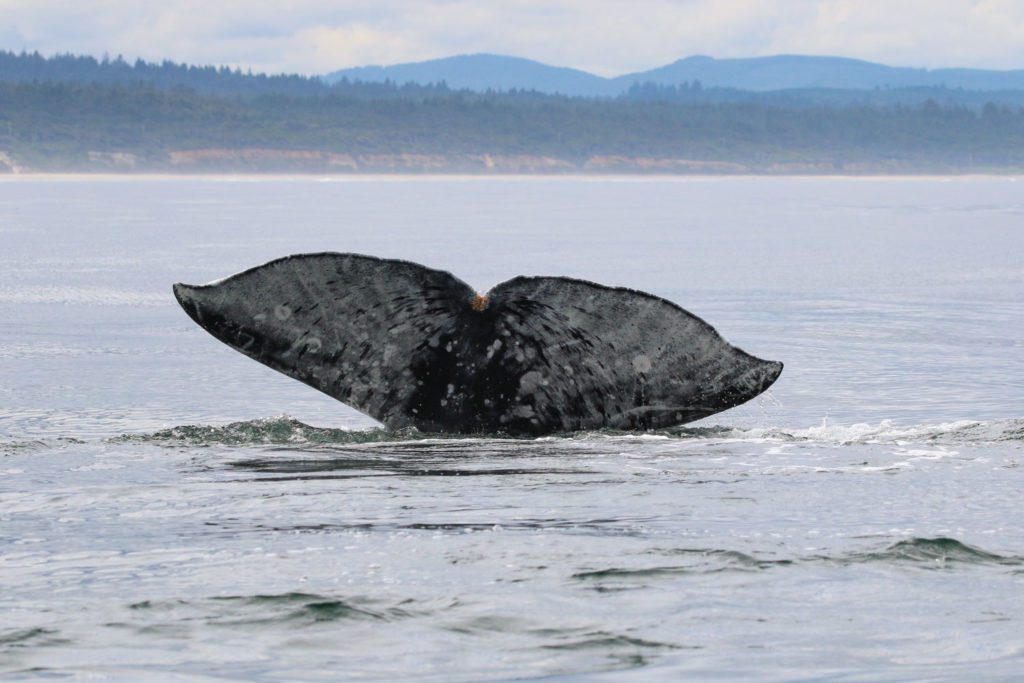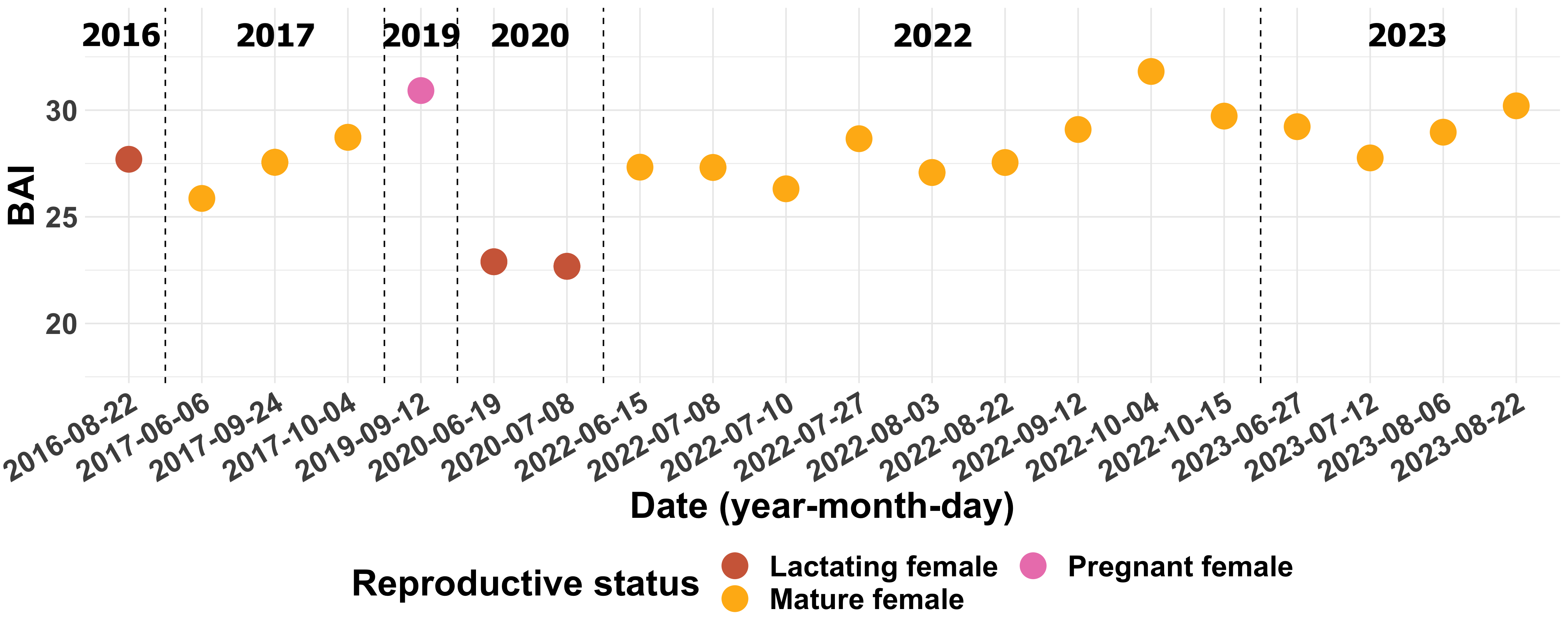“Scarlett” (A.K.A. “Scarback”, but we think this name is too ugly for such an amazing whale) is probably the most famous gray whale along our coast. She is easily recognizable by the large scar on the right side of her back, which also spreads to her left side, just before the first dorsal knob. No one knows for sure how Scarlett gained this wound (theories exist about failed harpoon efforts in the Russian Arctic and vessel strikes), but one thing is for sure: Scarlett is a resilient whale! She has been observed along the Pacific NW coast since 1996, where she is frequently seen feeding in kelp beds and reef areas between June and October in most years. Scarlett also has a unique fluke shape with a bow-shaped trailing edge and upward curved tips, which almost make her fluke look like a heart.
Scarlett has given birth to at least 3 calves (perhaps more have gone unreported?). She has brought each new calf back to our coast to teach them how to feed and survive. Since 2016 we have used drones to measure how Scarlett’s body condition changed as she cycled through life history stages of pregnancy, lactation, post-weaning, and resting (between reproductive periods). This research shows dramatic changes in how skinny or fat Scarlett became based on her needs: very rotund when pregnant to support the gestation of her calf; very skinny when lactating because she was giving most of her energy to make a chubby baby; and then a dramatic increase in size after she weaned her calf as she gained energy stores to recover and do it all over again. What an amazing whale!


